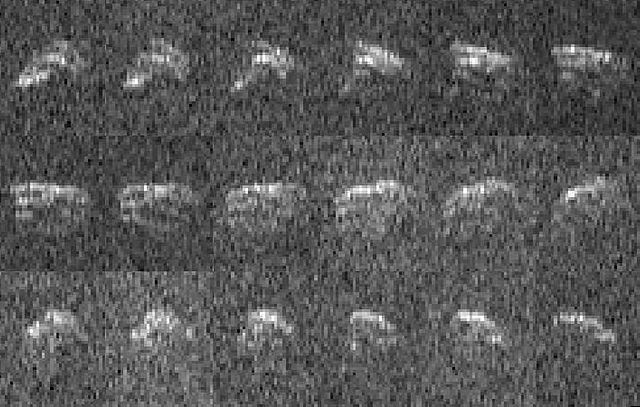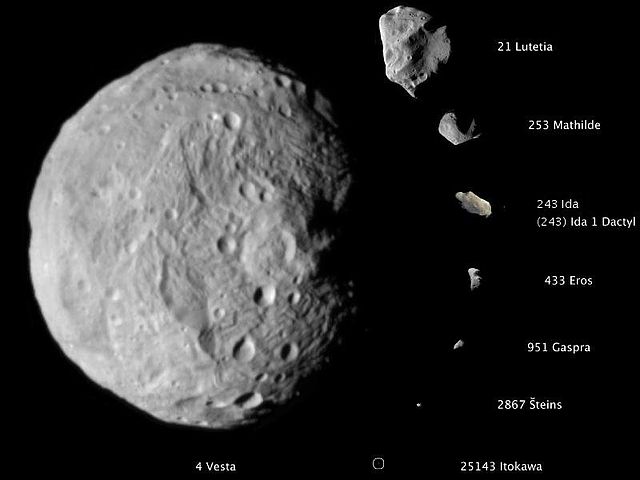The Jupiter trojans, commonly called trojan asteroids or simply trojans, are a large group of asteroids that share the planet Jupiter's orbit around the Sun. Relative to Jupiter, each trojan librates around one of Jupiter's stable Lagrange points: either L4, existing 60° ahead of the planet in its orbit, or L5, 60° behind. Jupiter trojans are distributed in two elongated, curved regions around these Lagrangian points with an average semi-major axis of about 5.2 AU.
Maximilian Franz Joseph Cornelius Wolf (1890)—the discoverer of the first trojan
A gravitational potential contour plot showing Earth's Lagrangian points; L4 and L5 are ahead (above) and behind (below) the planet, respectively. Jupiter's Lagrangian points are similarly situated in its much larger orbit.
Trojan 624 Hektor (indicated) is similar in brightness to dwarf planet Pluto.
An asteroid is a minor planet—an object that is neither a true planet nor a comet—that orbits within the inner Solar System. They are rocky, metallic, or icy bodies with no atmosphere. The size and shape of asteroids vary significantly, ranging from small rubble piles under a kilometer across to Ceres, a dwarf planet almost 1000 km in diameter.
2013 EC, shown here in radar images, has a provisional designation
A composite image, to the same scale, of the asteroids imaged at high resolution prior to 2012. They are, from largest to smallest: 4 Vesta, 21 Lutetia, 253 Mathilde, 243 Ida and its moon Dactyl, 433 Eros, 951 Gaspra, 2867 Šteins, 25143 Itokawa.
Vesta (left), with Ceres (center) and the Moon (right) shown to scale
Phobos







